

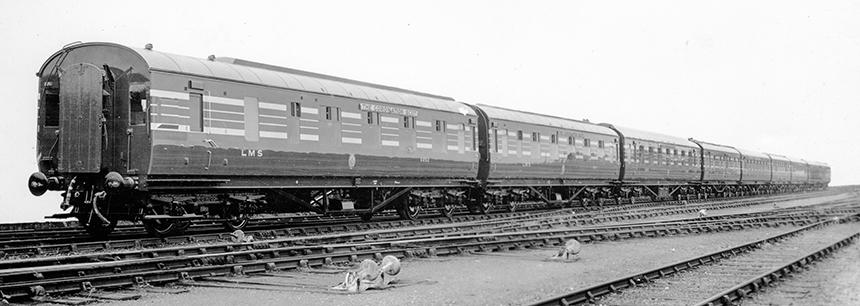
The official LMS promotional shot of Coronation Scot No.1 (Blue) Set.
Good afternoon to you all and welcome to the March edition of Engine Shed.
What a difference a month can make; as last month’s Engine Shed went live very few could have predicted that the health crisis in China caused by Covid-19 would be replicated in Europe and beyond. We now find ourselves in a situation where the Hornby teams are scattered, working from home where they can, retailers have been temporarily closed and the population is being urged to confine themselves to their homes to try to limit the spread of the virus.
Under these conditions, hobbies will take on an even greater importance in our lives, as we seek to distract ourselves from events in the outside world and I am sure that many of you will be making plans to create new layouts, extend or update existing ones, work on modifying rolling stock or get around to building that kit that you have had stashed away for a ‘rainy day’. Then again, it may be that you decide to put your favourite train on the layout, set the controller to run at a leisurely pace, make a mug of tea (obviously using a GS62616 Hornby Centenary Mug) and lose yourself in a book (why not treat yourself to R8158 The Hornby Book of Trains?), a magazine (The Collector features articles by some familiar names), or engage with other railway enthusiasts online (our social media and YouTube channels are available right around the clock). Our website remains open for business and online orders are still being processed safely by our warehouse team, although deliveries may be subject to short delays at present.
However you elect to pass the time during this trying period, do so safely and please heed the advice from our Government to give the National Health Service and other key workers a chance to make a difference.
So, moving on to this month’s featured item from the new tooling projects for 2020, we have decided to take a look at the forthcoming LMS ‘Coronation Scot’ coaches which, when they arrive at the end of 2020, will form the perfect companions to accompany R3857 6220 ‘Coronation’ and R3715 6224 ‘Princess Alexandra’ on the layout.
* Please note that images of the SLA prints will represent test builds for CAD evaluation and as such do not necessarily represent the final builds of the models, as refinements to the tooling and fit may yet take place and erroneous items may have been fitted to test the build.
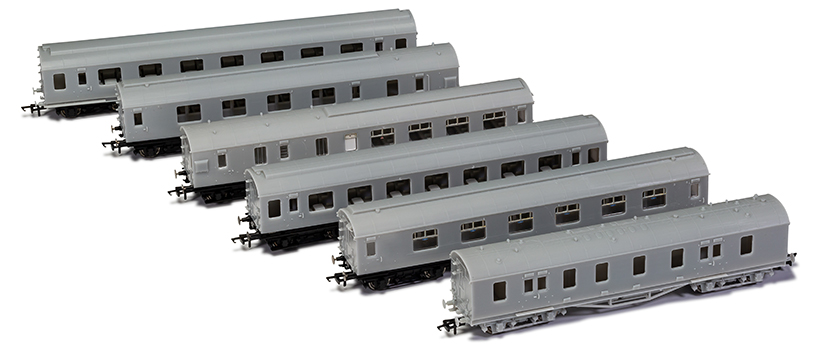
One of three long-term projects that came to fruition with the January range announcement, archival research on the Coronation Scot coach sets began in earnest during January 2016, with the first of several visits to the Railway Museum’s ‘Search Engine’, as well as subsequent visits to the National Archives at Kew in the following months. As the year wore on, circumstances at Hornby led to the project being trimmed to concentrate solely on the 4-6-2 Princess Coronation locomotives and research into the Coronation coach sets was put to one side. During the winter of 2018/19, with the Princess Coronation locomotives now part of the Hornby range, the Coronation Scot coach project was revived, and research was resumed, with new sources having come to light that provided information on the Thermotank forced air ventilation in particular.

Unlike the LNER’s Coronation sets, which were created as new vehicles, most of the coaches for the Coronation Scot were selected from the latest new batches of Stanier’s Period III stock, the exception being the FKs and BTKs which were built new for the service. The coaches selected were sent to the LMSR’s Wolverton works where they were converted for the Coronation Scot; the Lot numbers remained the same but new works’ drawings were created for the modifications.
Outwardly, the vehicles were largely unaltered across the body and underframes, however the interiors were completely refitted to a luxurious standard befitting the service. Apart from the RKs, pressure heating and ventilation systems were installed for the passengers’ comfort, with the coaches’ roofs featuring boxed ventilation shrouds. Lighting was improved, bell pushes added for steward service and the coaches were finished in a Caledonian Blue and Silver striped livery to match the five streamlined Stanier Coronation Pacific locomotives chosen to haul the Coronation Scot.
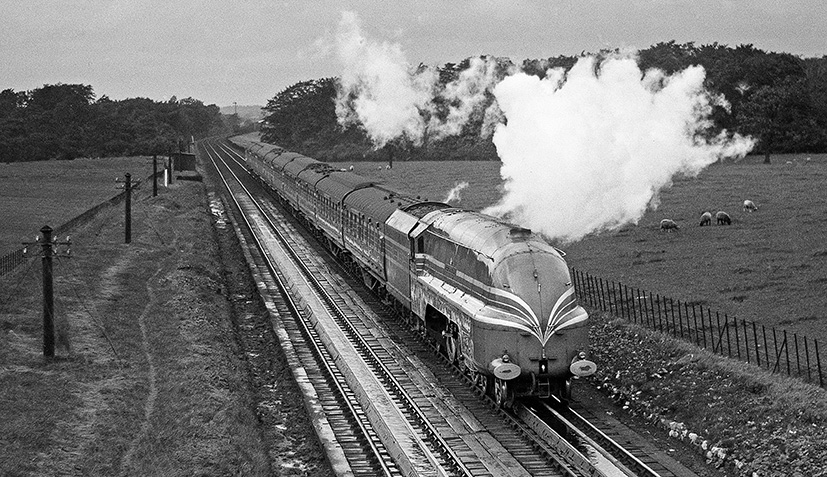
6220 ‘Coronation’ on Brock water troughs with the up 'Coronation Scot' in 1937. © H. Gordon Tidey/Rail Archive Stephenson.
On 29 June 1937, on a test run between Euston and Crewe, an eight car Coronation Scot hauled by 6220 Coronation set a new world record speed for a steam train of 114mph, briefly seizing the initiative from the LNER by just 1mph. Full service of the Coronation Scot, with the complete nine car formation, commenced on 5 July 1937 and continued uninterrupted until 3 September 1939 with the outbreak of the Second World War. The full nine car Coronation Scot train formation (from the London end), was made up from a Brake Corridor First (BFK), Corridor First (FK), Restaurant Open First (RFO), Kitchen (RK), Restaurant Open Third (RTO), Restaurant Open Third (RTO), Kitchen (RK), Restaurant Open Third (RTO) and Brake Corridor Third (BTK). Three sets of coaches were to be provided for the Coronation Scot, with any two sets operating at one time, with the other being spare. Unlike other services, the entire train was turned at each terminus so that the First Class section was furthest from the locomotive, probably so that First Class passengers had the shortest walk to convey their luggage to the train. At the outbreak of war in September 1939, all three sets of coaches were moved into storage, with two sets at Horwich and one at Lostock Hall and this proved to be the last time that the coaches were combined together as full sets. When the coaches were reintroduced to service in 1947, they were repainted into LMS maroon and put into ordinary service ‘on the best passenger trains’, the LMSR being unable to reintroduce high speed working at that time due to the rigours of war-time working on the permanent way structures. It had been suggested that some of the First Class vehicles could be converted into three-a-side seating, however H.G Ivatt, the new CME of the LMSR, discounted this based on the costs involved.

The full train diagram for the 'Coronation Scot'. © LMS Coach Association
All of the Coronation Scot coaches were eventually scrapped, bar one, with the first examples being withdrawn from service in 1962. The sole survivor from the Coronation Scot was an RK vehicle; 30088, which along with another standard RK, 30106, was converted into an Inspection Saloon. Both of these coaches survive to this day as preserved examples with 30088, renumbered as TDM 395279 in February 1958 to become an Operating Department Instruction Saloon, now in the hands of a private owner, being used as a ‘Summer House’.
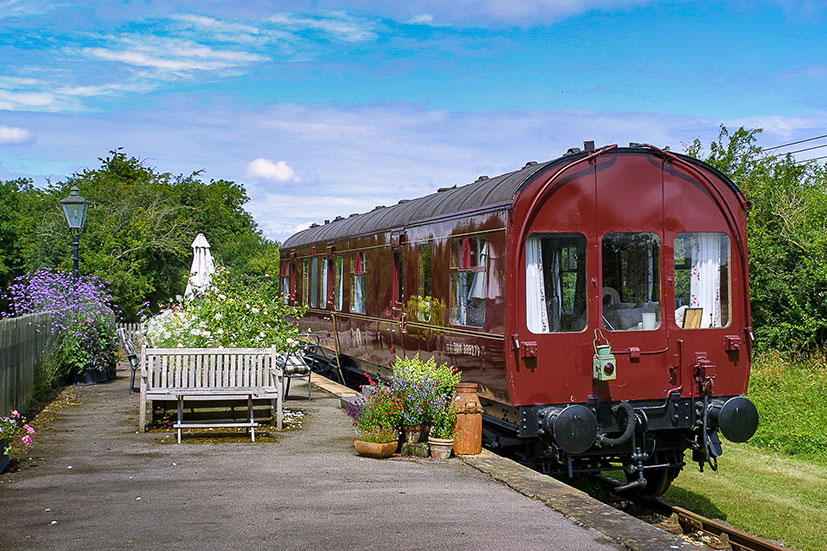
Having been introduced to the owners through the local branch of the Railway Correspondence and Travel Society (RCTS), we were fortunate in being granted access to measure the vehicle on one day during July last year. Little survives from the Coronation Scot period, but the base measurements were compared against the General Arrangement and detail drawings and served to paint a picture of how the vehicle would have once looked. This approach to measuring is quite common, especially when there are no existing prototypical vehicles surviving and as long as modifications are taken into account and not accepted as ‘de-facto’, a great deal can be gained from the exercise.

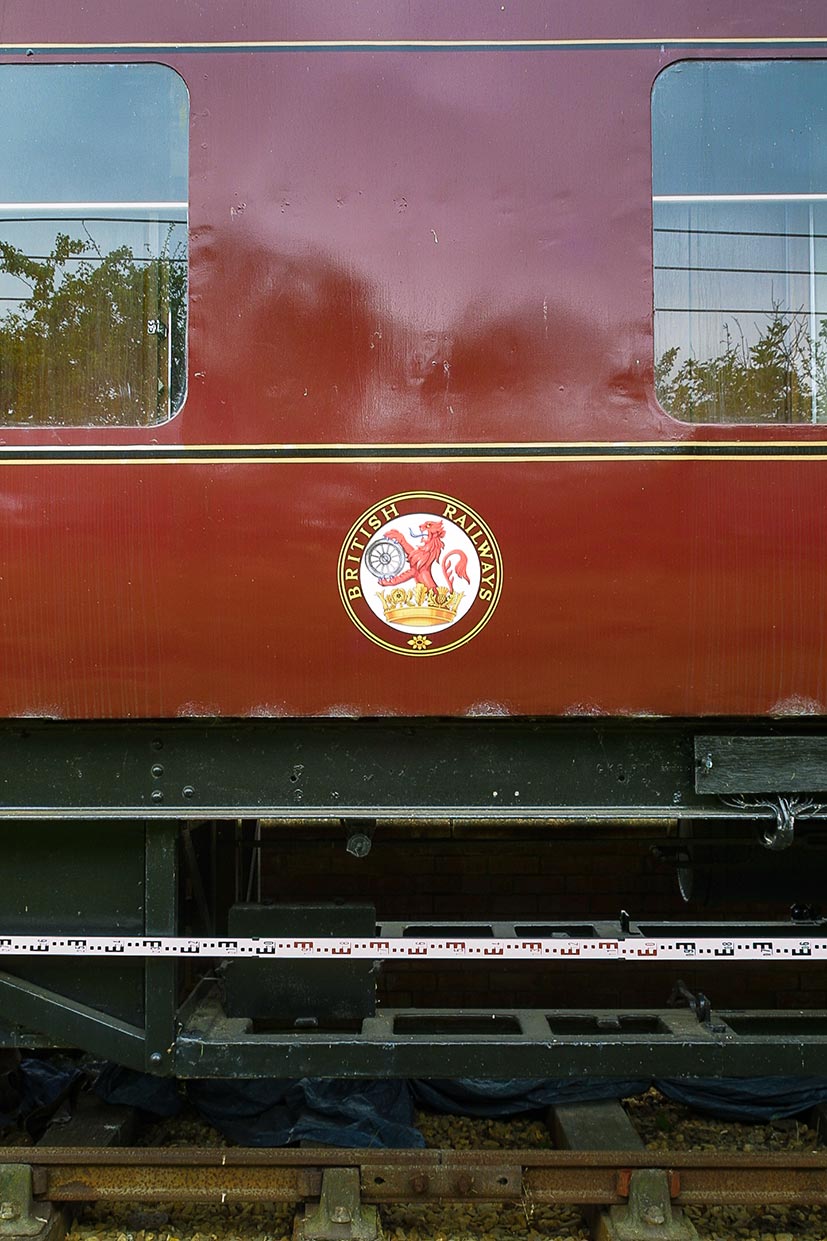
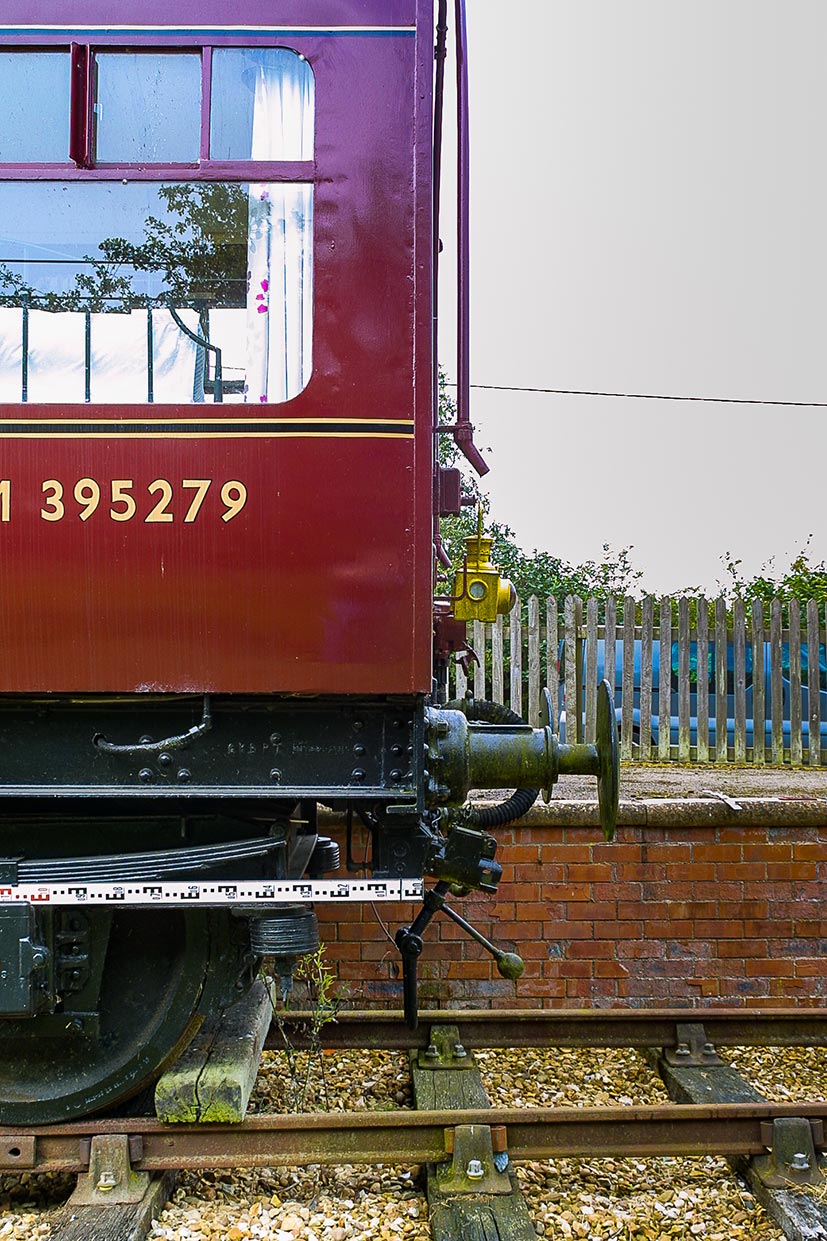
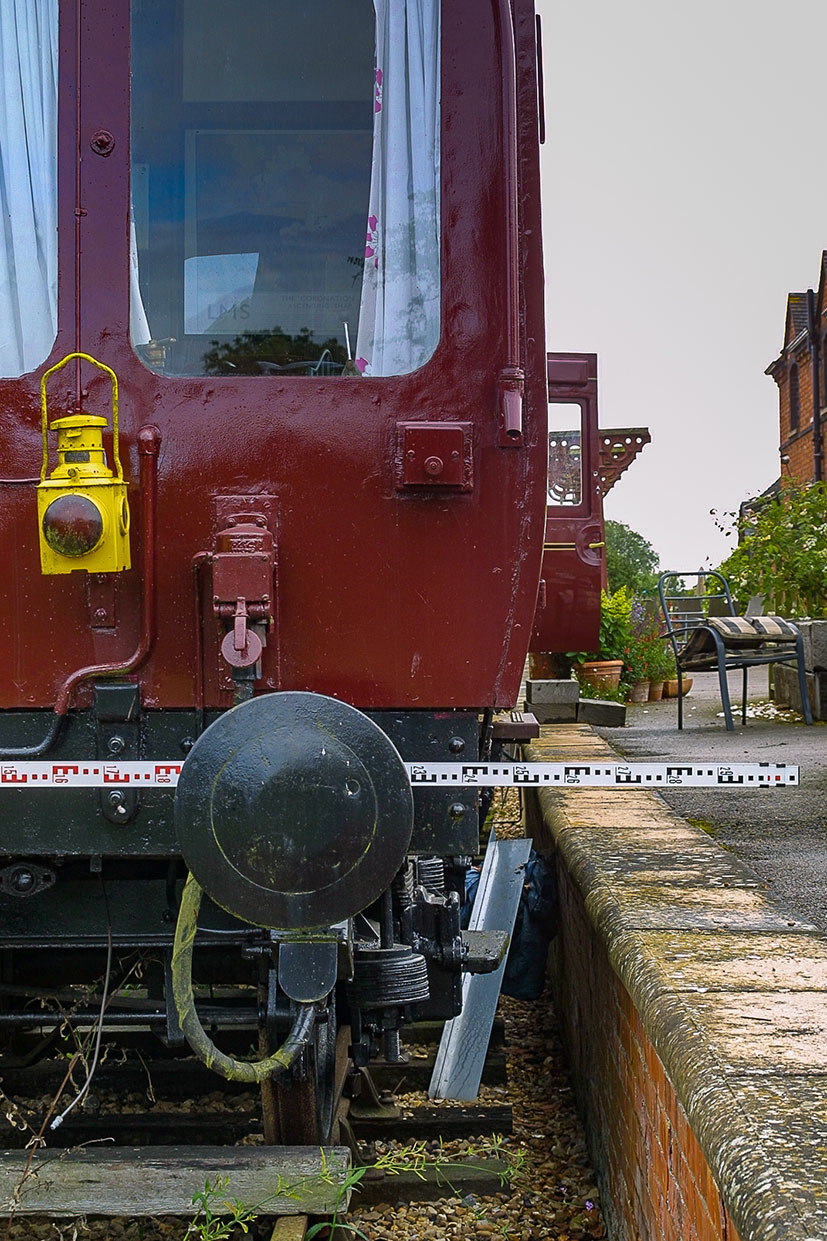
Twenty RKs were built by the LMSR to Diagram 1912, under Lot 956, six of which (nos. 30084-89) were liveried as Coronation Scot vehicles, with the remainder being liveried in lined LMS colours. There were no significant external body differences between the two types, other than livery, however it appears that the vehicles converted for the Coronation Scot may have been equipped with ex-LNWR 8’ bogies and fitted with LMS axleboxes, whereas the standard RK vehicles were fitted with 9’ LMS bogies.

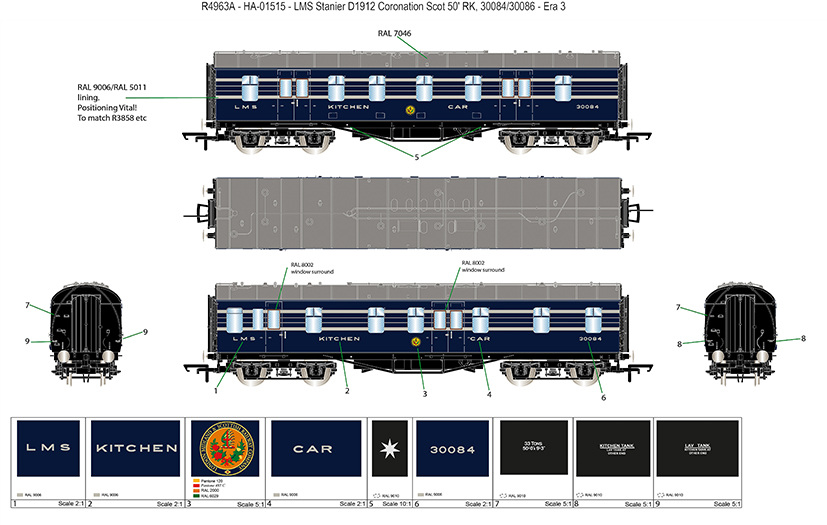
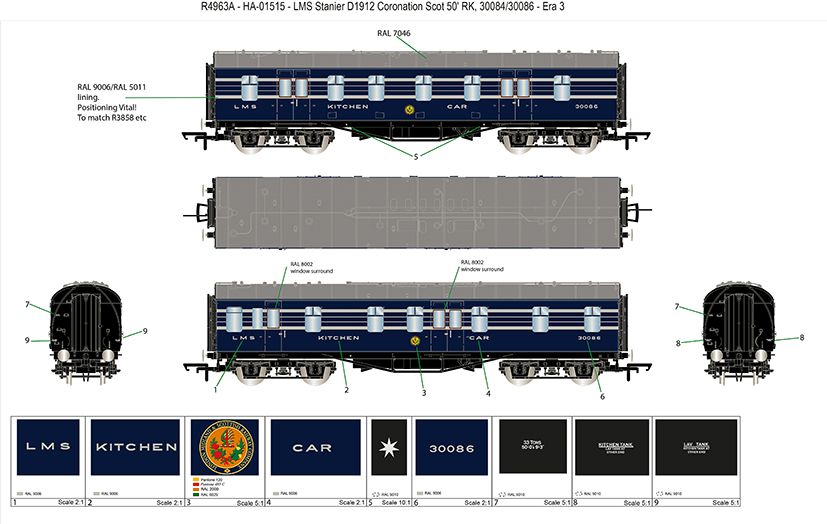
Having created one new tooling suite for the 50’ RK coaches, design attention was then switched to the 65’ Vestibule First, or RFO, built to Diagram 1902. Twenty-five RFO coaches were built to Lot number 734 in 1934, numbered 7490-7514 and three (nos. 7507-9) were modified in 1937 for the Coronation Scot. Works drawings and photographs highlighted some subtle external differences between the Coronation Scot coaches and the standard RFO stock, such as the diagonally opposed grills that appear on the lower body ends, as well as the major external difference between the types that was the Forced Air Ventilation ducting. The profile of the Forced Air Ventilation ducting had to be interpreted from overhead views of the train, as the Thermotank plans themselves are missing from the Railway Museum archives. The positioning is noted on works drawings, but only show the vents, not the streamlining applied to them.
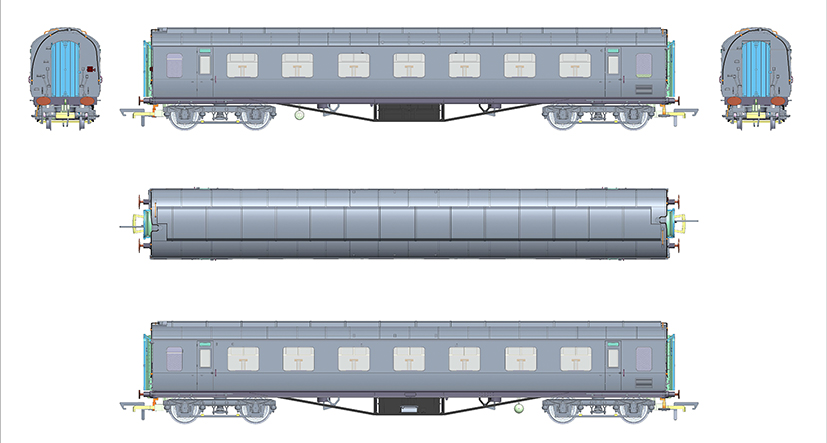

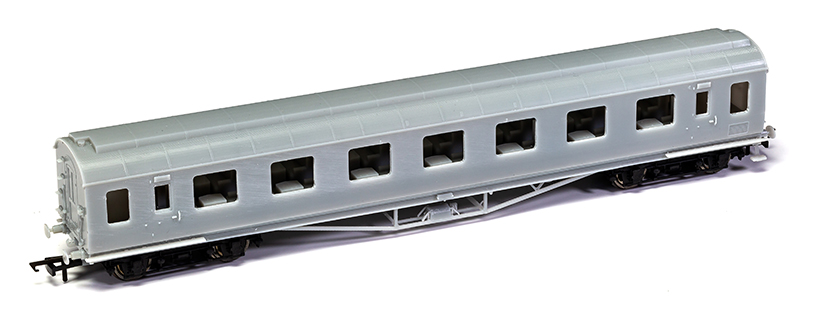
It was at this point that the authenticity of certain official photographs featuring side-on views of the RFO were called into question, a situation that had arisen once before when working on the Peckett W4 models. We consequently decided that the best option to verify equipment positioning would be to visit the Severn Valley Railway at Kidderminster, to view their restored RFO, 7511, which was from the same Lot as the Coronation Scot RFOs. The SVR's collection of passenger coaches is made up of almost seventy vehicles and covers vehicles from the Great Western Railway, the London Midland & Scottish Railway, the London & North Eastern Railway (LNER) and British Railways. The Carriage & Wagon Departments at Kidderminster is the principal depot for mechanical restoration and so it was that we found ourselves at the far end of the SVR’s impressive carriage sheds, on a freezing cold morning in the middle of December, measuring and surveying 7511.
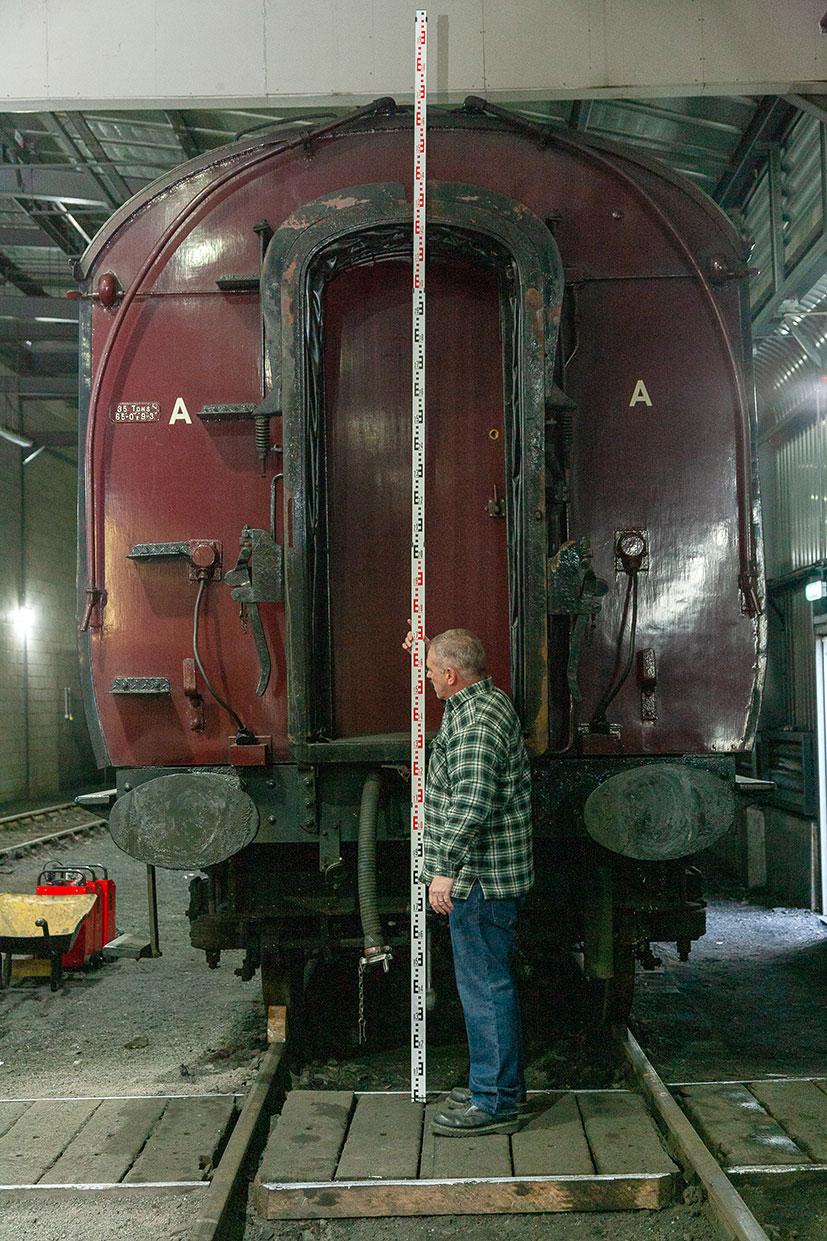

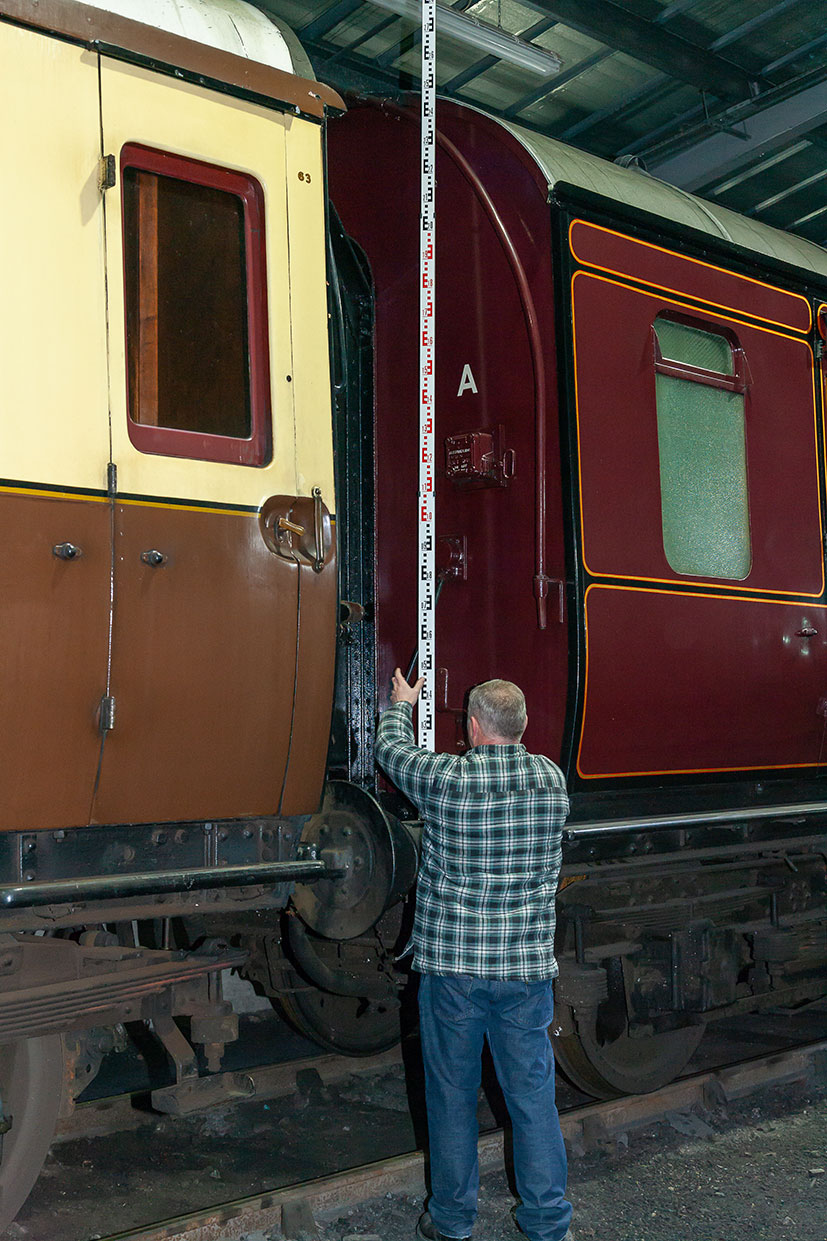
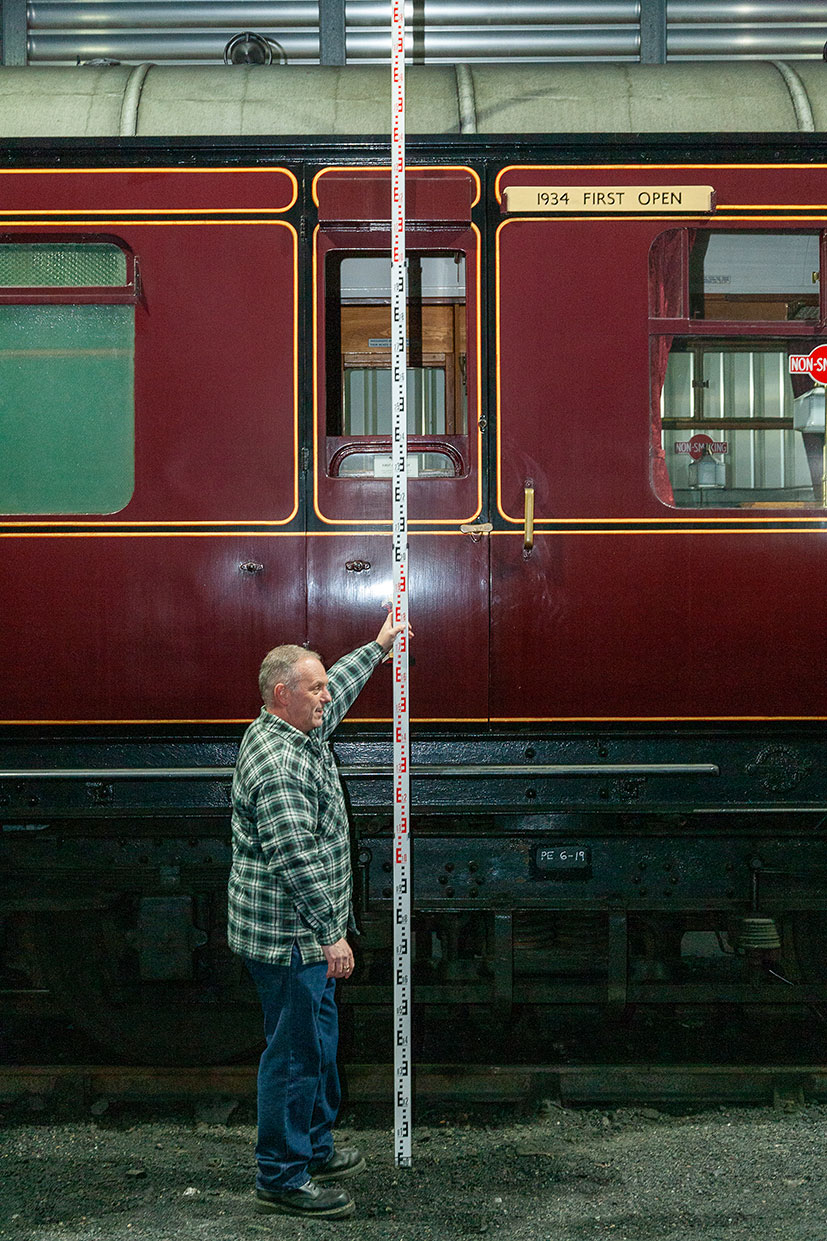
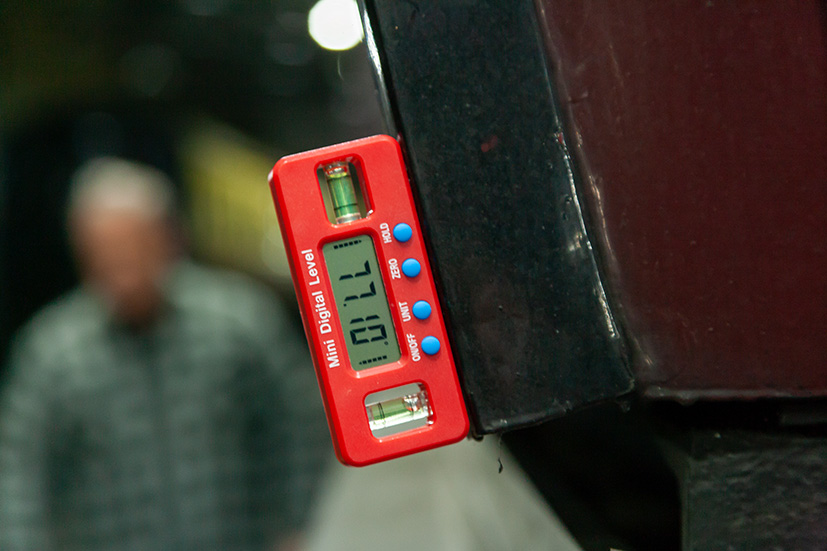

The visit to the SVR provided us with the last details needed to finalise the CAD design of the RFO, and with the remaining vehicles of the Coronation Scot being based on tooling modifications to existing underframes, roofs and bodies, the design phase of the project was completed early in the New Year.
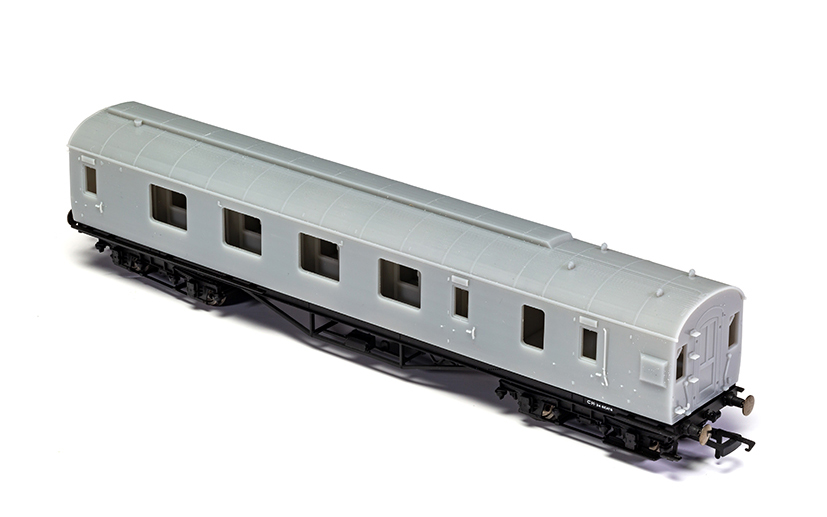
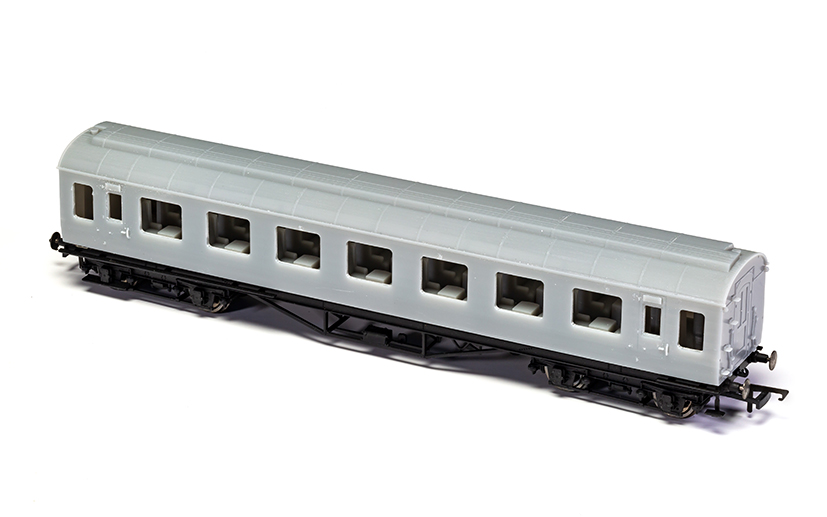
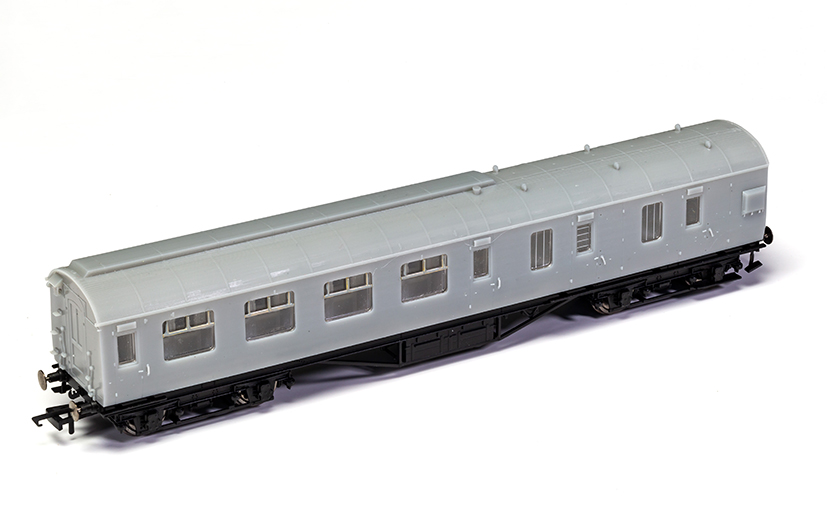

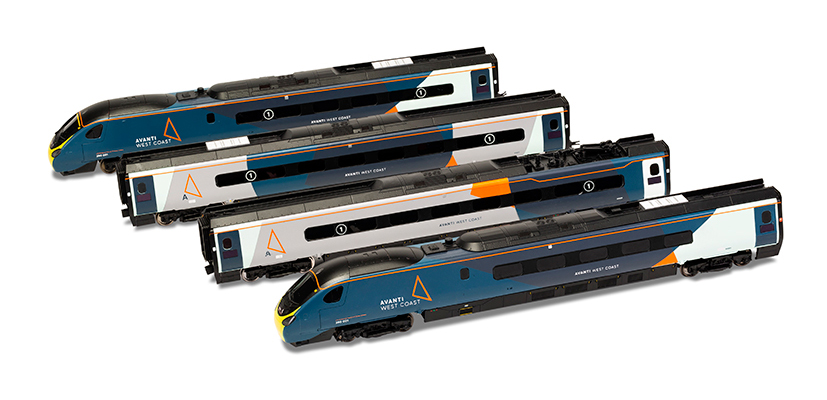
The R3952 Avanti West Coast, Class 390 Pendolino Train Pack comprises a motorised DMRF, along with PTF, MF and non-motorised DMS cars and is joined in the 2020 range by five additional coach models; R40015, R40016, R40017, R40018 and R40019, allowing a full Avanti West Coast nine-car set to be completed.
During the 1970s, British Railways had pursued the concept of tilting train technology for the West Coast Main Line through the Class 370 Advanced Passenger Train concept, allowing for higher speeds to be taken through curves. By minimising lateral forces on the passengers, the tendency to slide sideways was reduced, which in turn allowed passenger comfort levels to be maintained at higher speeds. Even with the cancellation of the APT project, the idea of train tilt was still being considered in the 1980s for the InterCity 225 project, and again during the 1990s for the aborted InterCity 250 concept. In 1997, when Virgin Trains were awarded the franchise to operate the West Coast Main Line following the privatisation of British Rail, it was on the proviso that new rolling stock was to be introduced, replacing the ageing Class 86/87/90 locomotives and Mark 2/3 coaches. Consequently a £500 million order was placed with Alstom/Fiat Ferroviaria to construct fifty-four, eight-car tilting train sets, later increasing to nine and then eleven car sets.

The Pendolino, named after Fiat Ferroviaria’s tilting train Pendolino technology and built by Alstom for Virgin Trains West Coast, set a new speed record for the southbound West Coast Main Line of three hours, fifty-five minutes in September 2006 (compared to the six hours, thirty minutes that the ‘Coronation Scot’ took). The first Class 390 Pendolino launched into passenger service on 23 July 2002 and following this, train sets numbered up to 390 034 were initially delivered as eight-car units, with the TS coaches being added during 2004-5 to make nine-car sets. Thirty-one sets were then increased to eleven-car capacity between 2010 and 2012, with four additional eleven-car sets being delivered from Italy, these all being identified in the 391 xxx range. The current Pendolino fleet of 52 sets comprises of 31 eleven-car sets and 21 nine-car sets and all have been transferred to Avanti West Coast, the operating name for the new West Coast Partnership between FirstGroup plc and Trenitalia UK that took over the operation of the existing West Coast Main Line services on 8 December 2019, from Virgin Trains.
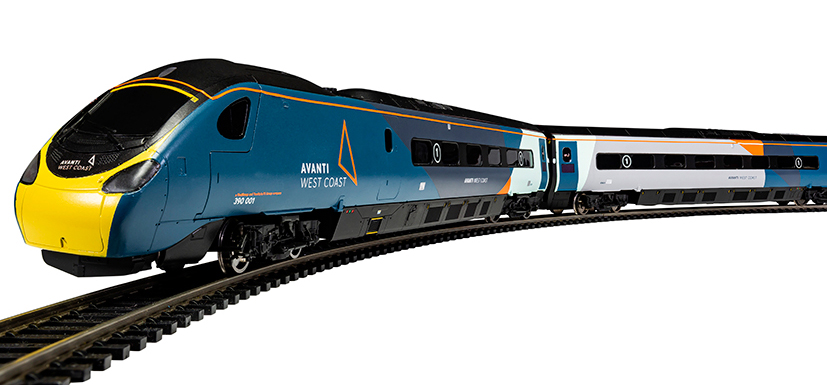
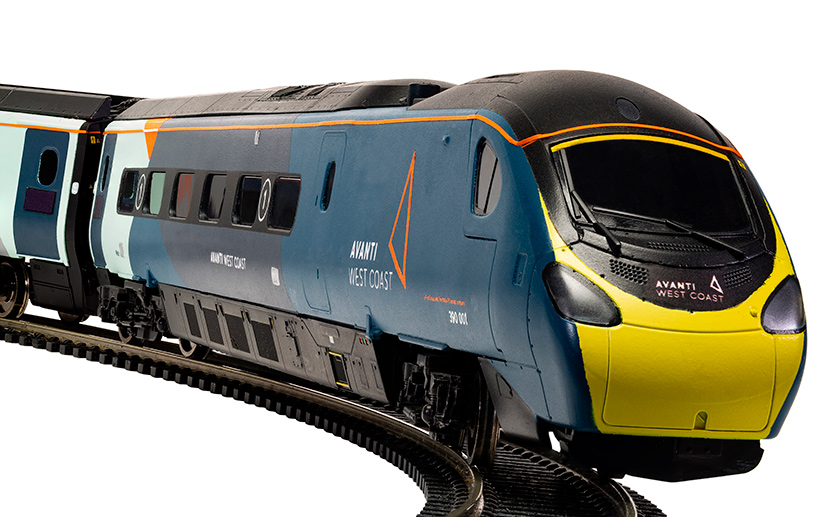
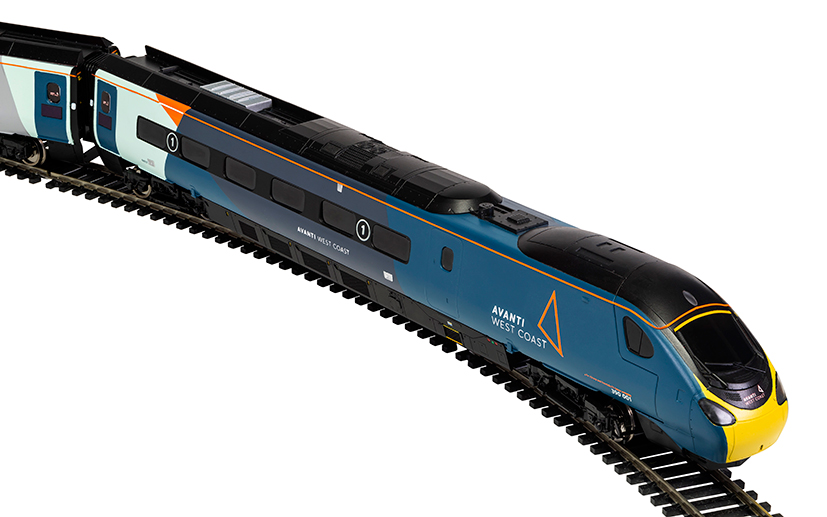
The agreement with FirstGroup plc and Trenitalia UK to replicate the complex Avanti West Coast livery was only concluded in mid-November 2019, which meant that our graphic artist was left with very little time to complete the artwork before the December 8th catalogue deadline. Since then, the finer details have been completed and the stunning result is shown below:

In last month’s Engine Shed, we were able to give the Engine Shed’s readership an exclusive look at the final CAD and decoration artwork for R3832, Class A2/3, 500 ‘Edward Thompson’ and we are now in a position to be able to share with you the decoration artwork for the remaining A2/3s; R3833 514 ‘Chamossaire’, R3834 60512 ‘Steady Aim’ and R3835 60523 ‘Sun Castle’, along with the two A2/2s; R3830 60510 ‘Cock o’ the North’ and R3831 60505 ‘Thane of Fife’. A full update on these projects, along with the W1, will feature in a bumper LNER edition of Engine Shed next month.
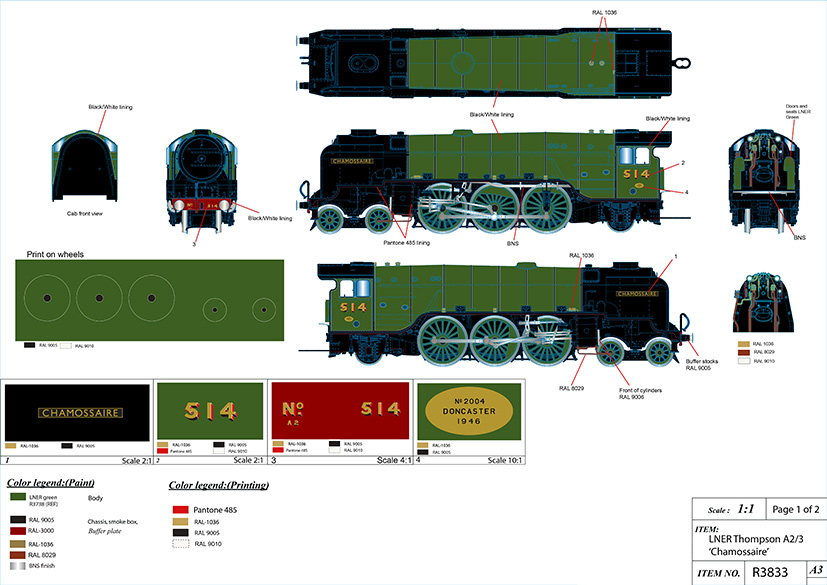

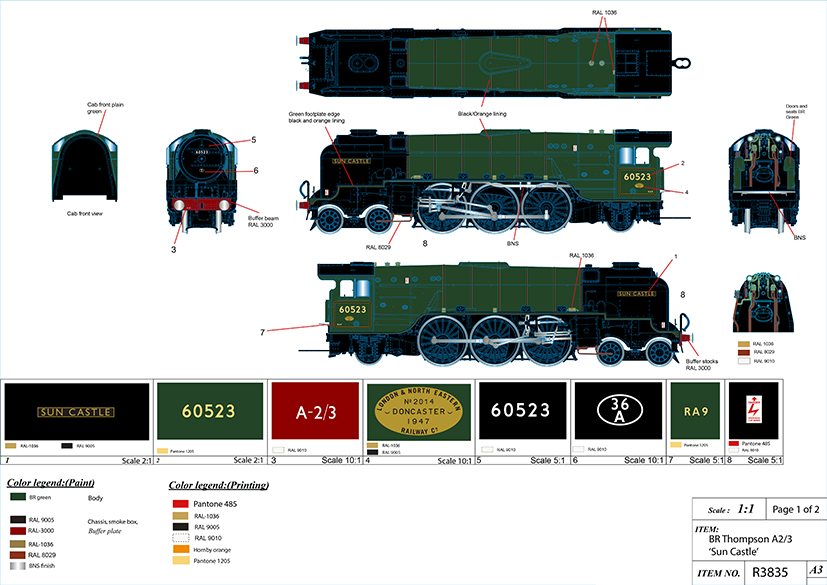
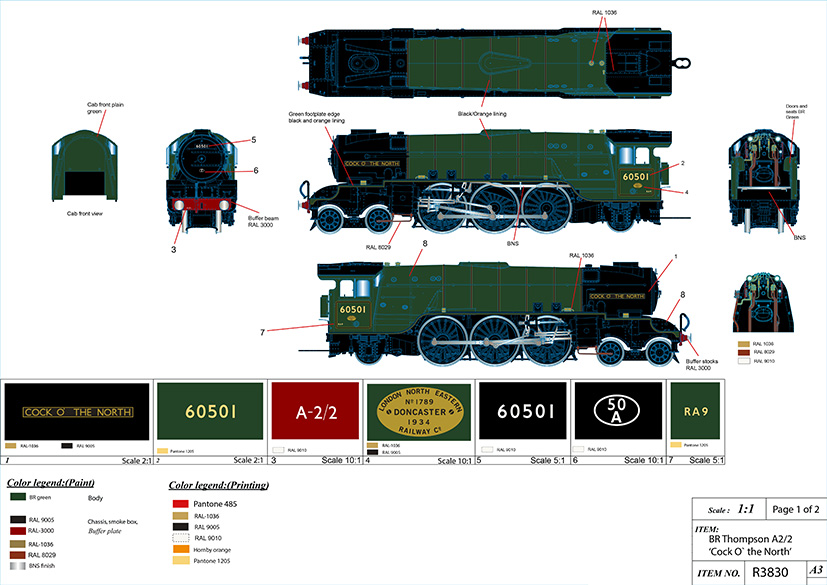
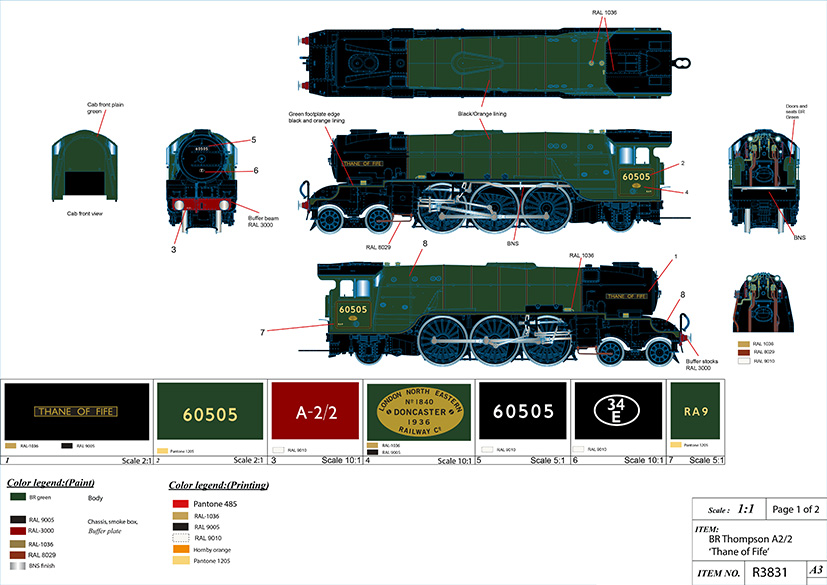
That concludes this month’s edition of the Engine Shed. The next edition will be with you on the 24th April, where we hope to be in a position to update you with progress on further new tool items from the 2020 range, as well as unveiling additional livery artwork and decoration samples.
If you have any feedback from this month’s blog, please do pass your comments on to us through Facebook, Instagram or Twitter, or via our Official Forum.
Best wishes to you all, stay safe and healthy.
The Engine Shed team
Return to Engine Shed homepage
© Hornby Hobbies Ltd. All rights reserved.